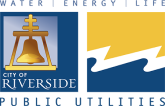We take our water quality very seriously. That is why we perform more than 22,000 water quality tests from well to tap each year, ensuring our customers receive only water that meets or surpasses all state and federal regulations for drinking water quality.
As water travels over the surface of land or through the ground, it dissolves naturally occurring minerals, and in some cases can pick up substances resulting from the presence of animals or human activity. In order to ensure that tap water is safe to drink, the U.S. Environmental Protection Agency (USEPA) and the State Water Resources Control Board (State Board) prescribe regulations that limit the amount of certain contaminants in water provided by public water systems.
- Maximum Contaminant Level (MCL) – This is the highest level of a contaminant that is allowed in drinking water.
- Public Health Goal (PHG) – California’s Environmental Protection Agency sets PHGs based on the level of a contaminant in drinking water below which there is no known or expected health risks.
RPU sends water samples to an independent state-certified laboratory that test for more than 200 regulated and unregulated contaminants in our water system as required by state and federal regulations. The latest state-of-the-art testing equipment can detect contaminants down to parts per million (ppm), parts per billion (ppb), and even parts per trillion (ppt).
RPU has treatment plants that help to clean water from contaminants, and we blend all water sources at a central location before it enters our distribution systems and flows to your tap.
Water Quality Annual Report
Each year, by mandate of the State Board of Water Resources and U.S. Environmental Protection Agency, RPU creates the Water Quality Annual Report to inform consumers about their water supplies. In June, the report is published with the previous year’s data and distributed to customers in a variety of ways.
Latest Report Past Reports Archive
Water Quality FAQs
More on Water Quality
Recent lead sampling met the recommendations by the state. More information about lead can be found online at EPA.gov/SafeWater/Lead.
Water Efficiency
Saving water and using water wisely has become extremely important as we continue to see significant dry periods and dry conditions across the region. Learn about some simple water-saving tips to incorporate into your everyday habits.
